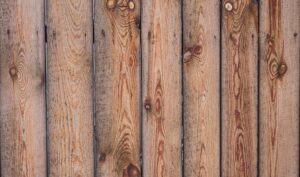What are the Main Causes of Post and Fence Rot
Wet and dry rot are the two greatest threats to any type of wooden fence. Fences treated with protective oils when they’re built help to keep them safe from the elements. Over time the strength of these oils diminishes, causing the fence to dry out and become quite brittle. When this happens, the structural integrity of the fence is compromised.
Wet Rot Is the Result of Exposure to Moisture

The most pressing concern people have about wet fence post rot is it eventually causes the complete collapse of your fence. Savvy homeowners prefer to use rot-resistant or rot proof materials for their fences. Many types of wood, like cedar, are rot resistant and can last a very long time without causing major issues.
Dry Rot Is the Result of the Erosion of the Protective Surface on the Fence
It’s important to understand that fences made from natural materials will face damage over time. Dry rot can cause major damage. Even worse, termites love to move in when dry rot takes over. Over time, a fence with dry rot falls apart.
To attempt to stop this from happening, fences treated with a protective covering can help slow the process. This provides protection that is comparable to what car wax does for a car. It adds to the attractiveness of the fence while protecting the surface from the elements. Although it’s impossible to stave off dry rot permanently, choosing the best wood and protective oils increase the lifespan of your fence.
Most newer homes use cedar or redwood for fences and posts. These materials stand strong against rain, snow and dampness. Posts that are pressure-treated are ideal because they help extend the lifespan of your fence. If you choose the right fence materials in the beginning, your new fence and fence posts stand up to the test of time.

